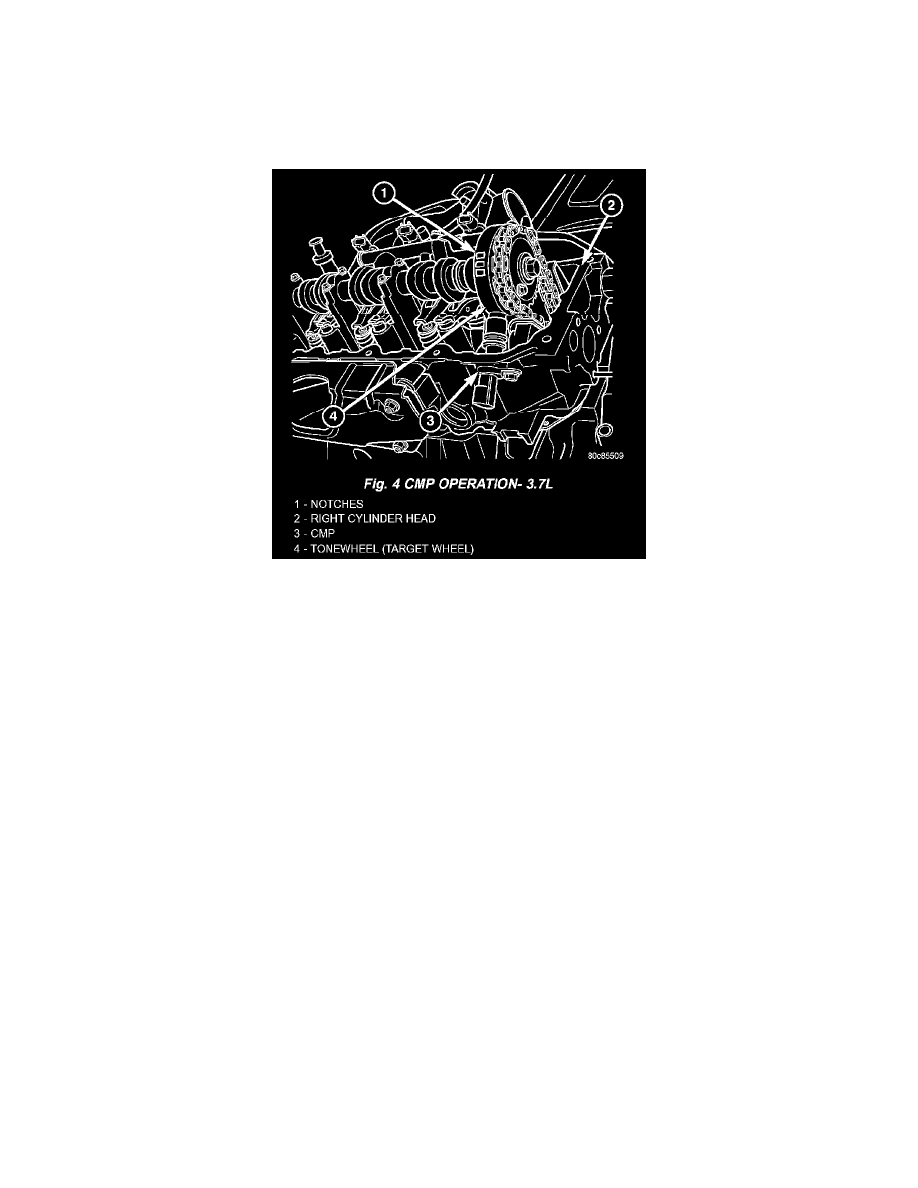RAM 1500 Truck 4WD V8-5.9L VIN Z (2002)

This input is used only to sense that the ASD relay is energized. If the Powertrain Control Module (PCM) does not see 12 volts at this input when
the ASD should be activated, it will set a Diagnostic Trouble Code (DTC).
CAMSHAFT POSITION SENSOR
3.7L
The Camshaft Position Sensor (CMP) on the 3.7L 6-cylinder engine is bolted to the right-front side of the right cylinder head.
Fig. 4 CMP Operation - 3.7L
The Camshaft Position Sensor (CMP) sensor on the 3.7L V-6 engine contains a hall effect device referred to as a sync signal generator. A rotating
target wheel (tonewheel) for the CMP is located at the front of the camshaft for the right cylinder head. This sync signal generator detects notches
located on a tonewheel. As the tonewheel rotates, the notches pass through the sync signal generator. The signal from the CMP sensor is used in
conjunction with the Crankshaft Position Sensor (CKP) to differentiate between fuel injection and spark events. It is also used to synchronize the
fuel injectors with their respective cylinders.
When the leading edge of the tonewheel notch enters the tip of the CMP, the interruption of magnetic field causes the voltage to switch high,
resulting in a sync signal of approximately 5 volts.
When the trailing edge of the tonewheel notch leaves then tip of the CMP; the change of the magnetic field causes the sync signal voltage to switch
low to 0 volts.
4.7L
The Camshaft Position Sensor (CMP) on the 4.7L V-8 engine is bolted to the right-front side of the right cylinder head.
